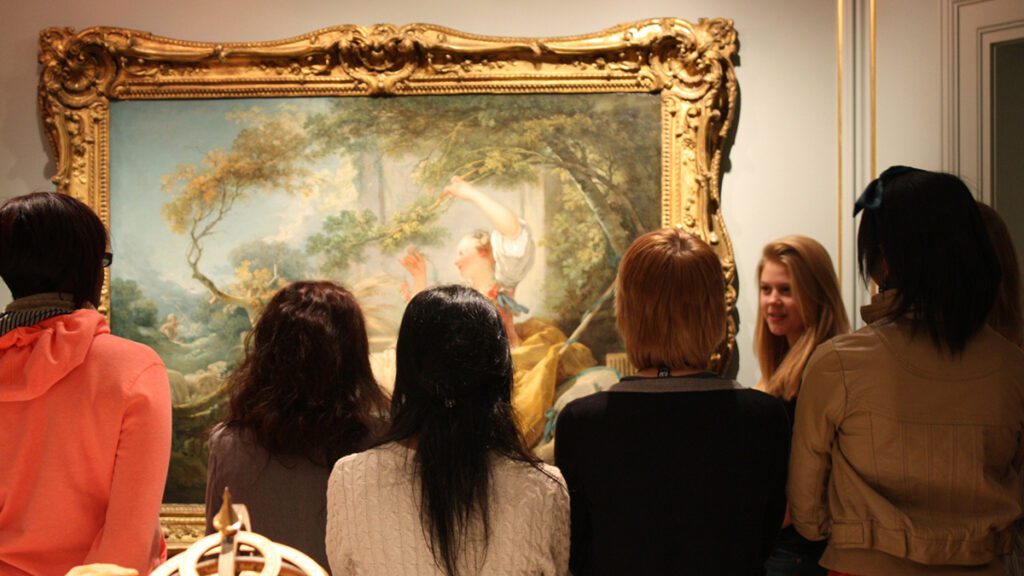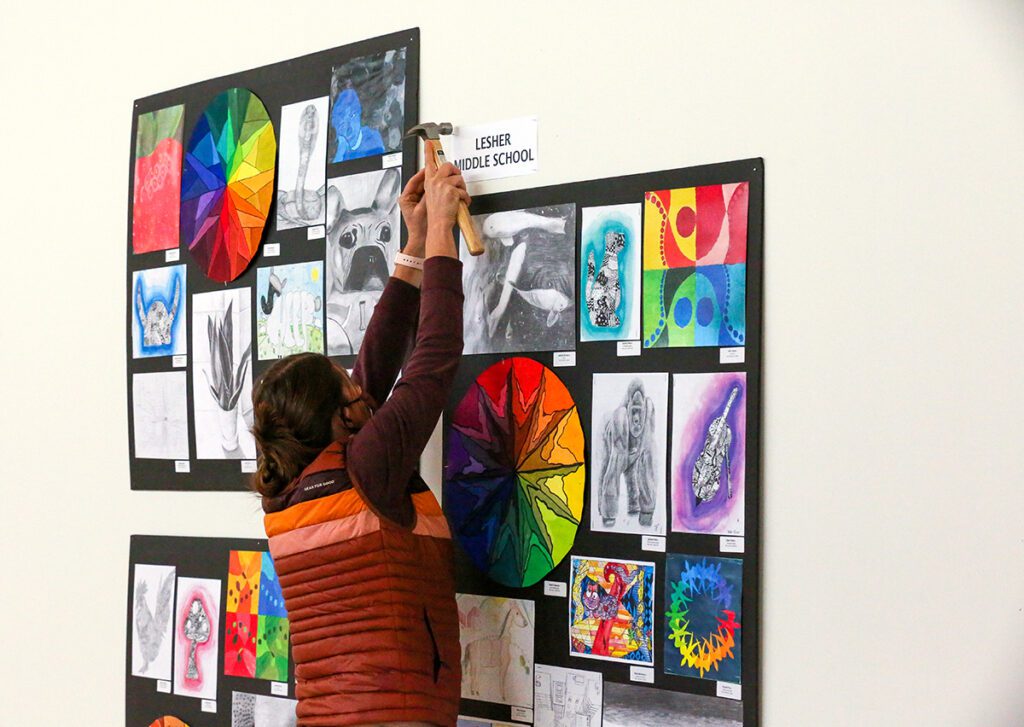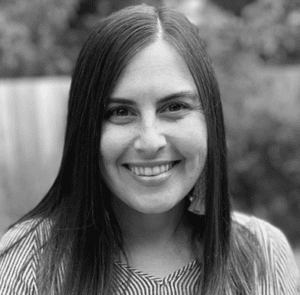All art teachers come with different teaching styles and philosophies, as well as varying art experiences and backgrounds. Some took the straight path and earned their degree in art education. Others worked in the field as graphic designers before transitioning into the classroom. Many showcased their skills as professional artists in galleries prior to teaching. After all, a second career in art education is not uncommon. At the end of the day, it doesn’t matter which route you took to get into the art room—all that matters is you are passionate about bringing the visual arts to your students. If you are an art teacher with an alternative path to the studio classroom, did you know you have an advantage? Your extra art experience brings a whole new set of skills and knowledge!
Let’s celebrate 12 ways your nontraditional education or art background prepared you to be the fantastic art teacher you are today!

1. Ability to Pivot and Improvise
The on-the-spot training from being placed in a classroom without student teaching forces you to pivot and be flexible. You may have been thrown into a scissor-wielding, permanent marker-smelling classroom full of students! Immersion is a quick way to learn and grow. The trial and error, as you figure out what works and what doesn’t, teaches you to stay on your toes and be open to improvisation.
2. Art Medium Know-It-All
You may be uber-knowledgeable in a specific area of art. For example, if you were a former stained glass artist before teaching art, you know all the ins and outs of this delicate medium. Being a master in a certain medium helps guide students to success and exposes them to a skill set they may otherwise have never learned.

3. Research Master
If you were a history or art history major turned art teacher, digging into research is definitely a strength. This handy knack for sleuthing is essential to curating interesting lesson plans! If you were a former career artist, you know the ins and outs of how to search for open calls-to-artists. Being a super researcher means you are more efficient with lesson planning and have more time for other activities!
4. Critique Sensei
Critiques were probably a large part of your former life as an artist or designer. Handling tough feedback from gallery owners, peers, and the public does not phase you. This is a great headspace to bring to the art classroom! When you get feedback from an evaluation, you know how to sift through the comments and take what you need to make strides in your practice. You are a pro at modeling, giving, and receiving constructive criticism to your students too!

5. Art Space Awareness
Teaching a wide range of classes in a variety of contexts is in your wheelhouse. Chances are you have experience helping out with summer camps, after-school programs, or workshops. This informal art education is part of the knowledge base you bring to the table.
6. Perspective
Earning an alternative certification means you have a different perspective when it comes to teaching art. You can bring your knowledge of what it takes to be a successful working artist to your students. They are lucky to have an art teacher with specialized training! You may not have pursued a traditional higher education degree so check to see if your district allows professional development hours from museums to count toward your certification.
7. Multitasking Expert
Chances are, you had to get your teaching certification while teaching. You spent all day in a bustling art room with a multitude of students, followed by attending courses and writing papers in the evening. You are able to manage large loads of work and tackle multiple assignments at once, all while maintaining a positive attitude!
If you’re looking for professional development opportunities that may count toward your continuing education credits, enroll in a graduate course or register for the NOW Conference. Courses provide relevant hands-on coursework that you can immediately bring into your art room. The Conference showcases the most innovative ideas in art education from your peers. Whichever option you choose, both are designed for art teachers by fellow art educators.
8. Workforce Understanding
Taking the alternative way to become a teacher may mean you left another profession. If this is you, you bring an understanding of how different job sites, groups of people, and businesses or non-profits run. This wider professional view gives you an advantage at a school. IEPs, faculty meetings, and parent-teacher conferences, which may be daunting to a new art teacher fresh out of a degree program, are nothing new to you.
9. Project-Based Learning Expert
Storing, managing, and working on projects is something you’ve cultivated a knack for. Students love projects in the art classroom and you have the experience and connections to bring real ones to your students to solve. You are also used to overseeing multiple projects at once, breaking them down into manageable tasks and deadlines. You’re the natural expert to infuse Project-Based Learning into the curriculum.
10. Real-World Examples
Along the same lines, you love to introduce students to real-world examples. You are full of stories and your students love to hear them because it makes art relevant! Remember the time it was a late night at work and you forgot to order a birthday cake from the bakery? You grab a premade cake from the grocery store and icing containers in only the primary colors. You need orange icing so you mix red and yellow together and voila—color theory in action!

11. Strong Communicator
Many teachers feel comfortable talking to students but not fellow teachers, parents, or stakeholders. Communicating with adults is a whole different skill set! If you are coming into the art room from another career, speaking to other adults is nothing to fear. You’ve had a lot of practice speaking to supervisors, clients, guests, and colleagues. You can easily translate your communication skills to administrators, parents, caregivers, guest teachers, and coworkers.
12. Unmatched Passion
If you chose to leave another profession to become an art teacher, you have drive and passion for art education and the visual arts like none other! You made the calculated decision to leave a job or field you established yourself in to cultivate young artists, promote the arts, and foster creativity. For that, give yourself a huge pat on the back!
Stepping into an art classroom without formal art education training is daunting. Your alternative pathway has prepared you more than you realize! Tap into your experience and reflect on the unique skills you can bring to your students and art program. You are able to improvise and do a deep research dive in an instant. You have a depth of knowledge in a particular area of art, unlike most art teachers with a traditional art education degree. You have the wisdom to step back and see the larger picture with your workforce experience. Multitasking and real-life examples make you an efficient and engaging art teacher! Most importantly, you absolutely love what you do. It’s an honor to bring the valuable knowledge you gained from your unconventional route to your students every single day.
How has your non-traditional art teacher path made you a better art teacher?
Why did you jump headfirst into the world of art education?
Magazine articles and podcasts are opinions of professional education contributors and do not necessarily represent the position of the Art of Education University (AOEU) or its academic offerings. Contributors use terms in the way they are most often talked about in the scope of their educational experiences.





